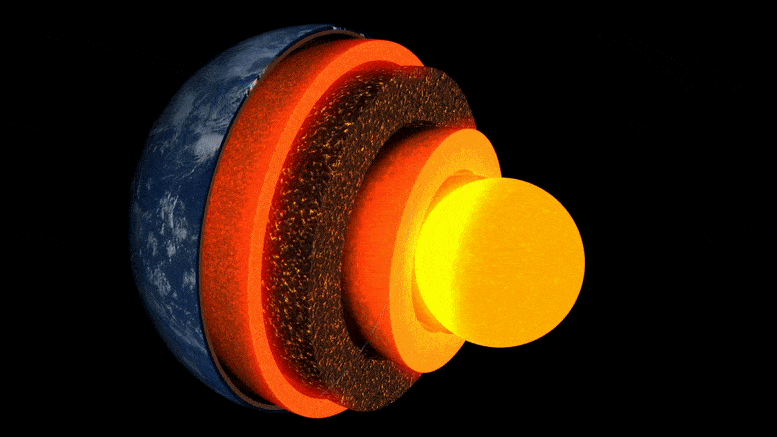
However, the enormous thermal energy emanating from the Earth’s interior set dynamic processes in motion, such as mantle convection, plate tectonics, and volcanism.
One possible answer may lie in the thermal conductivity of the minerals that form the boundary between the Earth’s core and mantle.This boundary layer is relevant because it is here that the viscous rock of the Earth’s mantle is in direct contact with the hot iron-nickel melt of the planet’s outer core.However, researchers have a hard time estimating how much heat this mineral conducts from the Earth’s core to the mantle because experimental verification is very difficult.
Now, ETH Professor Motohiko Murakami and his colleagues from Carnegie Institution for Science have developed a sophisticated measuring system that enables them to measure the thermal conductivity of bridgmanite in the laboratory, under the pressure and temperature conditions that prevail inside the Earth.Measuring device for determining the thermal conductivity of bridgmanite under high pressure and extreme temperature.“This measurement system let us show that the thermal conductivity of bridgmanite is about 1.5 times higher than assumed,” Murakami says.This suggests that the heat flow from the core into the mantle is also higher than previously thought.
Greater heat flow, in turn, increases mantle convection and accelerates the cooling of the Earth.
Murakami and his colleagues have also shown that rapid cooling of the mantle will change the stable mineral phases at the core-mantle boundary.But as soon as post-perovskite appears at the core-mantle boundary and begins to dominate, the cooling of the mantle might indeed accelerate even further, the researchers estimate, since this mineral conducts heat even more efficiently than bridgmanite.
Moreover, scientists need to clarify how the decay of radioactive elements in the Earth’s interior – one of the main sources of heat – affects the dynamics of the mantle.
Reference: “Radiative thermal conductivity of single-crystal bridgmanite at the core-mantle boundary with implications for thermal evolution of the Earth” by Motohiko Murakami, Alexander F.